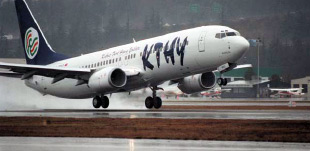 It’s been raining buckets. You’re the pilot of an Airbus A320 accelerating for take-off, but still well short of V1. Then the nose wheel starts aquaplaning. Control becomes an issue, and you discontinue take-off. Just such an incident occurred at Melbourne airport in January 1998. It’s been raining buckets. You’re the pilot of an Airbus A320 accelerating for take-off, but still well short of V1. Then the nose wheel starts aquaplaning. Control becomes an issue, and you discontinue take-off. Just such an incident occurred at Melbourne airport in January 1998.
The pilot in command discontinued take-off on runway 27, later attempting to take-off from runway 34.
The aircraft returned to the terminal after and unrelated problem with the inertial reference systems. It’s often referred to as aquaplaning.
Frequently the actual incident turns out to be caused by something different, but still part of what we generally refer to as the “wet, slippery runway” problem.
Slipperiness: Control of an aircraft during ground operations depends on adequate tire contact and friction between tire and pavement surface. This interaction is relied on for lateral control and to oppose side forces such as cross wind. Equally significant is the retarding force for braking. In situations where tire contact or friction are deficient, there is a loss of directional control and braking, generically known as slipperiness.
Three basic modes of slipperiness have been identified: dynamic hydroplaning, viscous hydroplaning and reverted rubber skidding.
Dynamic hydroplaning or aquaplaning: This can occur when an aircraft lands fast enough on a wet runway. Where aircraft speed and water depth are sufficient, inertial effects prevent water escaping from the footprint area, and the tire is buoyed or held off the pavement by hydrodynamic force.
 Viscous hydroplaning: This occurs when a tire is unable to puncture the thin residual film left on a pavement in the footprint area. This water lubricates the surface and friction is reduced. The most positive method of preventing this lubrication is to provide a texture to the pavement surface. Viscous hydroplaning: This occurs when a tire is unable to puncture the thin residual film left on a pavement in the footprint area. This water lubricates the surface and friction is reduced. The most positive method of preventing this lubrication is to provide a texture to the pavement surface.
Reverted rubber skidding: This is a complex phenomenon which over the years has been the subject of a variety of explanations. Reverted rubber skidding is akin to viscous skidding in that it occurs with a thin film of water and a smooth runway surface. This situation often follows dynamic or viscous hydroplaning where the aircraft wheels are locked. The locked wheels create enough heat to vaporize the underlying water film forming a cushion of steam that eliminates tire to surface contact. Once started, reverted rubber skidding will persist down to very low speeds, virtually until the aircraft comes to rest. During the skid, there is no steering capability. Indications of a reverted rubber skid – albeit after the event – are distinctive white marks on the pavement and a patch of reverted rubber,
| MODE |
PREREQUISITE |
| Dynamic hydroplaning |
Flooded runway. High speed. |
| Viscous hydroplaning |
Thin water film. Smooth surface. Wheel free to roll. |
| Reverted rubber skidding |
Thin water film. Smooth surface. Locked wheel. |
What aerodrome operators need to know about managing slippery runways?
AERODROMES
Similar to the uncured state, on the tire, from the perspective of aerodrome management, it is useful to summarize the following key points:
- The principal dangers to aircraft are greatly increased stopping distance and loss of directional control
- Given sufficient water depth, the critical speed for dynamic hydroplaning increases with the square root of the tire inflation pressure.
- Nose wheel control can be a consideration at lower speeds, because of their lower tire inflation pressure.
- Experience suggests dynamic hydroplaning will not occur unless the runway is heavily flooded. This indicates the importance of runway shape; with cross fall and longitudinal grade such that long drainage paths are avoided. There is also a feed for continued surveillance and urgent maintenance, when pavement shape is compromised by depressions or “bird baths”.
- The combination of smooth or excessively worn tires on a smooth surface has the potential to be lethal in wet conditions. (This is why tire-wear criteria must be established and monitored in accordance with aircraft maintenance manuals.)
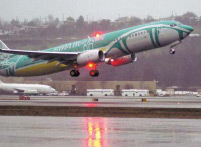 Friction requirements: The International Civil Aviation Organization (ICAO) recommends that the average surface texture depth of a new surface should be not less than 1.0mm. Of greater significance is the ICAO Standard which says “measurements of the friction characteristics of a runway surface shall be made periodically with a continuous friction measuring device using self wetting features”. Friction requirements: The International Civil Aviation Organization (ICAO) recommends that the average surface texture depth of a new surface should be not less than 1.0mm. Of greater significance is the ICAO Standard which says “measurements of the friction characteristics of a runway surface shall be made periodically with a continuous friction measuring device using self wetting features”.
The standard requires member States to specify two levels:
- A maintenance friction level below which corrective maintenance action should be initiated.
- A minimum friction level below which information that a runway may be slippery when wet should be made available to pilots. ICAO now provides guidance information for States to determine friction levels. Suggested friction values are tabulated for new runway surfaces, for maintenance planning purposes, and for runway surfaces in use. Values are listed for various alternative friction measuring devices.
Australia’s rules and practices for aerodromes (RPAs) require the aerodrome to “ensure that tests are conducted at a frequency of not less than once a year to determine the friction of runways serving RPT jet aircraft”. These tests refer to surface texture measurement, rather than the continuous friction measuring devices. With the assistance of specialist advice, aerodrome owners can set their own friction values based on the ICAO guidance information, “new construction” datum levels, and the specific conditions at the particular aerodrome. This practice is prudent in cases where rubber build-up is evident, and needs to be monitored. Australian design standards for licensed aerodromes require paved runways used by regular public transport aircraft to have an average surface texture depth greater than 1.0mm as measured by the grease patch test (in line with the ICAO recommendation). The test is described in the Recommended Practices Aerodromes (RPAs).
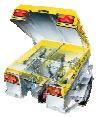 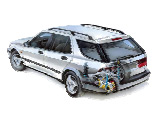 Continuous friction measuring devices: Continuous friction measuring devices:
Many friction measuring devices have been used. These include the diagonal brake vehicle (DBV), The Swedish Skid meter, the airport surface friction tester (ASFT) the British Mumeter, and the “Grip tester” trailer. The Mumeter, a lightweight three-wheeled trailer, has been extensively used in Australia, with some success. These trailers have the necessary mobility to take measurements with a minimal amount of runway down time, and importantly, they provided fast repeatable results.
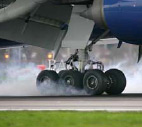 Runway Treatments: The simplest form of surface treatment is the removal of rubber deposits. This is normally done by specialist contractors, using either chemical or water blast techniques. Mechanical grinding has also been used effectively to remove heavy deposits. Aerodrome operators should always be vigilant with regard to rubber buildup. In addition to reduced friction, rubber deposits have been known to dislodge under traffic becoming a hazard to aircraft. Such was the case with a Boeing 767 at Melbourne last year. Grooving is normally the preferred treatment for concrete and bituminous concrete surfaces, for all airport types. Engineers can always “buy an argument” on the specification to be adopted; I favor Transverse grooving with groove size of 6mm x 6mm. The groove spacing has increased over recent years from 32mm to 38mm. Runway Treatments: The simplest form of surface treatment is the removal of rubber deposits. This is normally done by specialist contractors, using either chemical or water blast techniques. Mechanical grinding has also been used effectively to remove heavy deposits. Aerodrome operators should always be vigilant with regard to rubber buildup. In addition to reduced friction, rubber deposits have been known to dislodge under traffic becoming a hazard to aircraft. Such was the case with a Boeing 767 at Melbourne last year. Grooving is normally the preferred treatment for concrete and bituminous concrete surfaces, for all airport types. Engineers can always “buy an argument” on the specification to be adopted; I favor Transverse grooving with groove size of 6mm x 6mm. The groove spacing has increased over recent years from 32mm to 38mm.
Rubber deposit smeared on the runway is suggested by the authorities, to be one of the major risk factors jeopardizing the landing safety. It is the consequence of the extensive heat generated by the touch of the static wheels to the runway surface.
The melted rubber gets smeared on the surface of the runway and minimizes the effect of the anti skid layer ergo the friction level. Even a thin layer of water on the runway causes the aircraft to start aquaplaning. This, as a result, abates the controllability of the plane and its ability to brake. |


